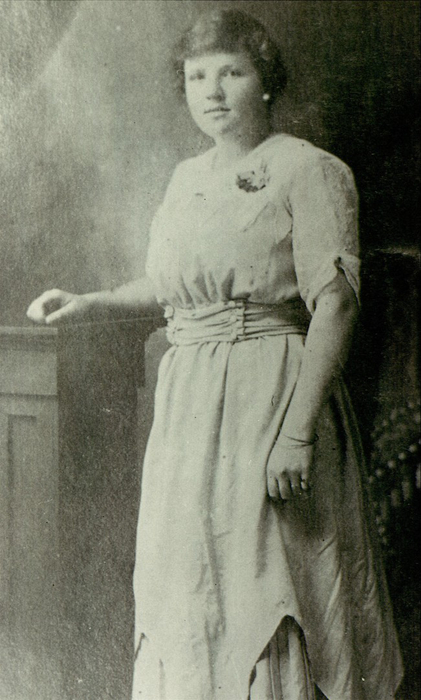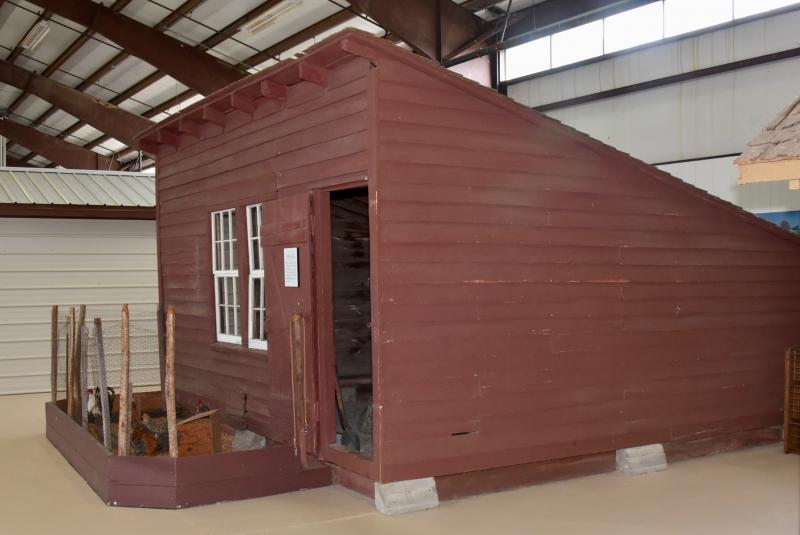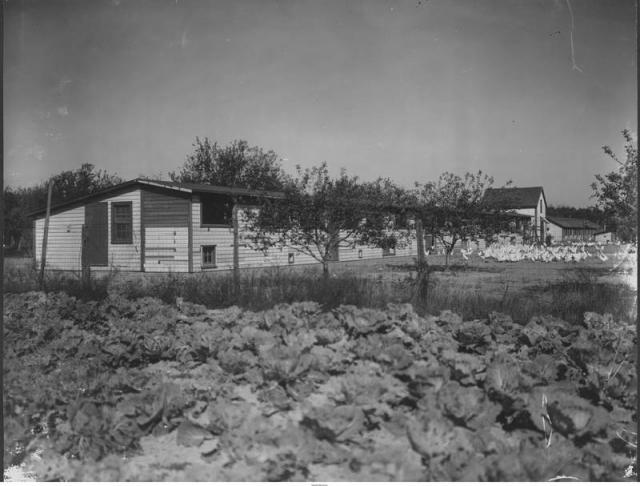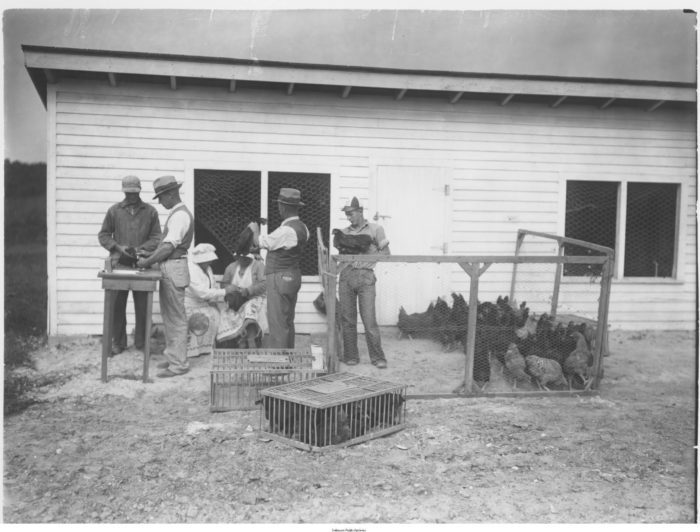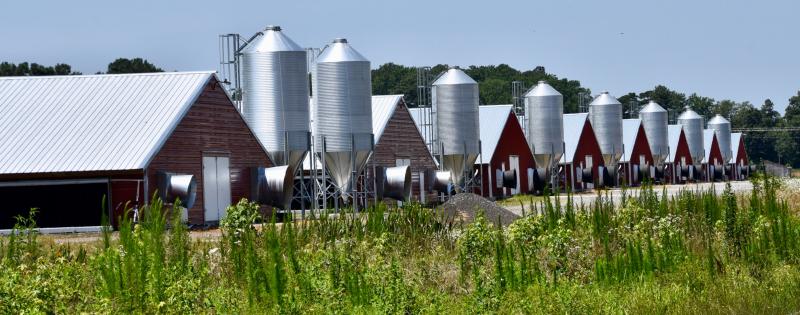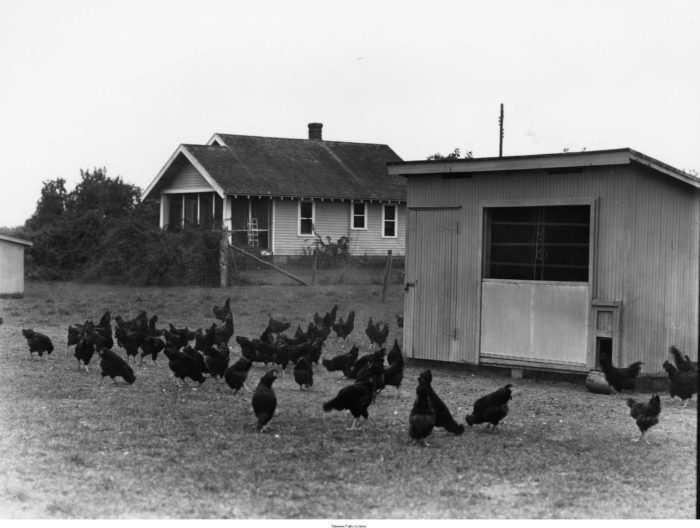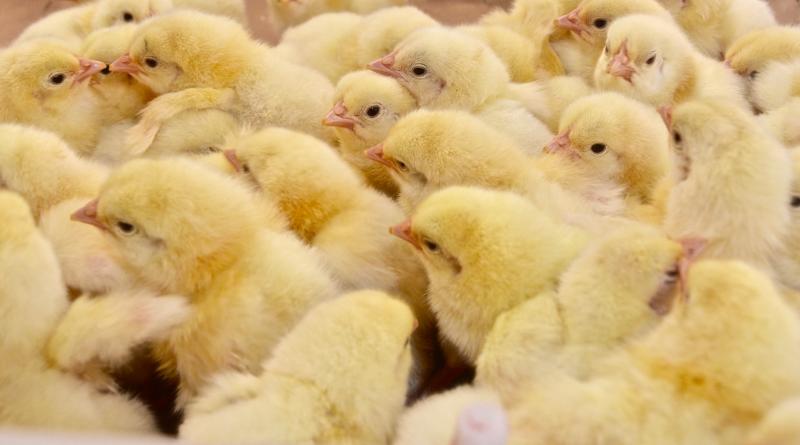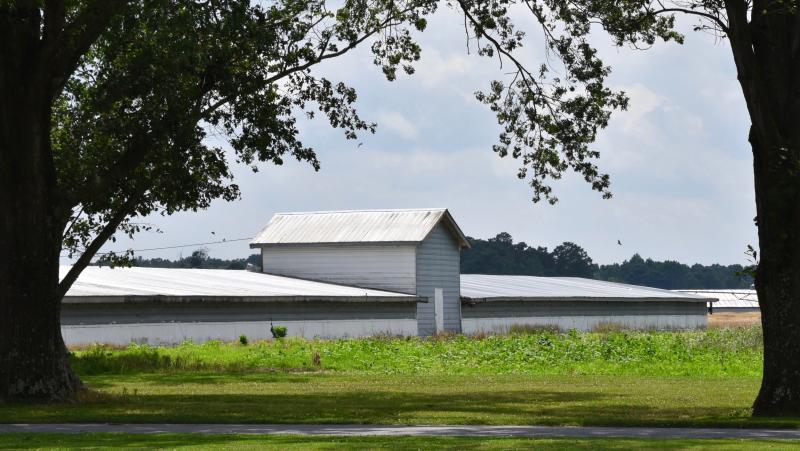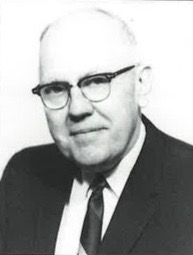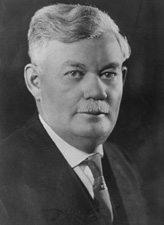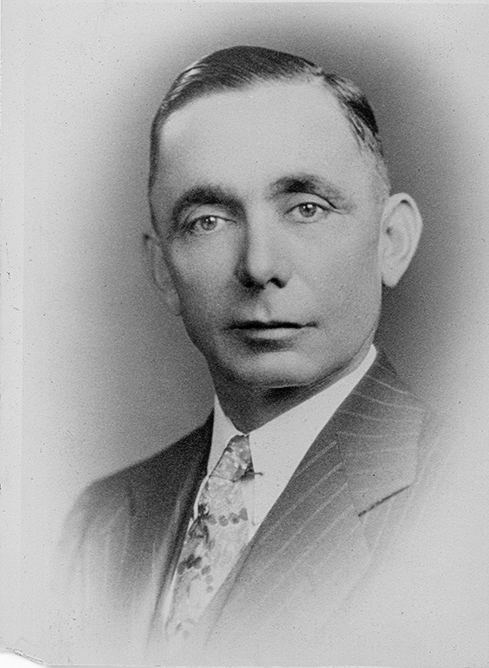A delivery mix-up started the $3.5 billion Delmarva poultry industry.
Each year, Cecile Steele of Ocean View ordered 50 chicks from a Dagsboro hatchery owned by Vernon Steen to restock her small laying flock.
In 1923, Steen mistakenly sent her 500 chicks. Instead of returning the chicks, Steele decided to raise them in a 16-by-16 shed, an historic building now at the Delaware Agricultural Museum in Dover.
After 18 weeks, with the chicks weighing just over 2 pounds, Steele sold the meat for 62 cents a pound, which would have been $5 a pound in today's money.
Nearly 100 years later, chickens are grown in less than half that time and gain more than three times that weight.
She and her husband, David Wilmer Steele, who later became a state representative, quickly realized they could live off the income from chickens, and before long they were raising as many as 10,000 chickens a year. Others in the area followed suit; by 1928 there were an amazing 500 growers in Sussex County.
Eagle Poultry in Frankford, the first processing plant, opened in 1938.
First integrated company
In 1939, former Delaware senator and Gov. John G. Townsend Jr. and his son, Preston, opened a hatchery in Millsboro. They expanded the business and opened a feed mill in 1945, followed by a processing plant in 1957.
Townsends Inc. Farms would grow into the ninth-largest poultry company in the country. It would also become the first fully-integrated poultry company, controlling the entire process from growing grain for feed to final processing. Townsends was later sold to Mountaire Farms headquartered in Millsboro.
Early Sussex plants
According to the book, “Delmarva Chicken Industry: 75 Years of Progress,” in the late 1930s, Sussex County had three poultry processing plants: H&H in Selbyville, Eagle Poultry in Frankford, and Millsboro Poultry.
In 1941, Mike, Harry and David Pack moved from New York City to Milford and opened the largest processing plant. At its peak, Sussex Poultry Co. was processing 100,000 chickens per day with 450 employees.
By 1942, 10 Delmarva poultry plants processed 38 million broilers a year, or three-fourths of the chickens raised on Delmarva.
Chickens sold at auction
In an effort to get the best prices for their chickens, Delmarva farmers formed the Eastern Shore Poultry Growers Exchange, which sold chickens daily at auction from 1952 to 1969 at the Selbyville VFW.
The event was so important, it was broadcast daily on local radio. Up to 29 processing plants, brokers and poultry haulers purchased Delmarva chicken. Buyers had representatives who inspected every flock prior to auction based on reports filed by sellers.
The exchange came to an end when sellers of live chickens started building their own processing plants instead of selling at auction.
The industry continued to grow across Sussex County and Delmarva. In 1925, 50,000 chickens were sold; by 1934, that number had risen to 7 million.
Conditions were right for the industry in Sussex County. Inexpensive timber was available to build chicken houses, the climate was mild, land was inexpensive and the area had access to major cities and ports.
During the 1940s, World War II played a major factor in further expansion of the industry. With the rationing of red meat, the demand for chicken – which could reach market quicker than cattle and pigs – escalated.
The early growing and processing of chickens was nothing like it is today. At first, chickens were hand fed and allowed to roam free during the day and put into houses at night. Because of the labor required to raise chickens, some houses had apartments added as a second floor for the farmer or caretaker.
Before local processing plants, chickens were shipped live to city markets.
No. 1 in the country
Today on Delmarva, there are 10 processing plants, 13 hatcheries and 10 feed mills.
Sussex County is ranked No. 1 among all United States counties in meat chicken production at about 200 million pounds per year.
In 2017, three area poultry companies were ranked among the top 20 in the country based on weekly production by weight: Perdue Farms, Salisbury, Md., ranked fourth; Mountaire Farms, Millsboro, ranked sixth; and Allen Harim Foods, Seaford (now Millsboro) ranked 20th.
The industry creates nearly $3.5 billion in economic activity per year with 3,500 direct jobs and another 3,000 industry-supplier jobs.
Nearly three-fourths of Delaware's cash farm income is from raising chickens, and nearly all of the corn and soybeans grown in Delaware are used for chicken feed, said Delmarva Poultry Industry Executive Director Holly Porter
Porter said it's hard to imagine the area without the poultry industry. “There is no industry in this area that could replace it with as many jobs and the economic impact it has,” she said.
Porter said poultry farmers have faced many challenges – including regulatory and environmental issues – over the years. “The farmers and the industry have stepped up to meet every challenge,” she said.
THE IMPACT OF THE DELMARVA POULTRY INDUSTRY
2018
OVER 10 YEARS
605 million chickens +6 percent
$3.4 billion, wholesale value +31 percent
Processed 4.3 billion pounds +23 percent
1,302 growers -26 percent
$268 million, growers income +25 percent
20,425 chicken company employees +41 percent
$784 million, employees income +59 percent
5,166 poultry houses +3 percent
$1 billion, feed purchased -8 percent
$137 million, capital investment
Each year poultry companies purchase:
93 million bushels of corn; 41 million bushels of soybeans; and 267,000 bushels of wheat
POULTRY PEOPLE
Frank Perdue: A tough man
Frank Perdue, longtime president and CEO of Perdue Farms based in Salisbury, Md., passed away in 2005, but not before Perdue chicken was a national brand. A slick TV marketing campaign helped him achieve that goal.
He was the star of the show as company spokesman on more than 200 TV commercials. The phrase, “It takes a tough man to make a tender chicken,” became one of the most recognized slogans in TV advertising history.
Perdue Farms was started in 1920 by his parents, Arthur and Pearl Perdue, who raised small flocks of chickens on their Salisbury farm. Frank joined the family business in 1939 at the age of 19 and became president in 1952, building the company into one of the largest poultry companies in the country.
The Steeles meet with untimely fate
Cecile Steele, credited with starting the poultry industry on Delmarva, and her husband, Rep. David Wilmer Steele, moved from their modest farmhouse to one of the nicest homes in Ocean View, which is now The Café on 26 on Atlantic Avenue. But they were not able to enjoy their business success into their old age. While fishing on Oct. 7, 1940, off Ocean City on their $10,000 yacht, two explosions occurred, causing a fire and throwing them and two guests into the water. The guests survived, but both Steeles – Cecile was 40 and Wilmer was 41 – died from heart failure.
John Townsend: Politician and farmer
John G. Townsend Jr. (1871-1964) of Selbyville did more to elevate the early poultry industry than any other man in Sussex County as an innovative farmer and politician, serving as a state representative from 1903-05, governor from 1917 to 1921 and U.S. senator from 1929-41.
Prior to starting in the poultry industry with his son, Preston, in 1938, he operated a lumber mill, became the “Strawberry King,” opened the first tomato-canning factory in the county, and had 5,000 fruit trees with the second-largest orchard in the country. Townsends Inc. Farms quickly grew into the ninth-largest chicken company in the country.
John Isaacs: Poultry pioneer
John Sudler Isaacs (1889-1950), already a successful farmer, is another Sussex Countian who capitalized on the early poultry industry. In 1939, he operated three houses near his cannery near Milton, where he processed limas, peas and asparagus. Historians say he packed more lima beans than any other farmer in the world.
At 1,295 feet long, one of his houses was considered the longest chicken house in the world.
And, like many other early poultry farmers, the demand for chicken in World War II made him a millionaire. In 1942, he owned 51 percent of the Eagle Poultry Company, among Sussex County's first processing plants.
Due to a shortage of workers in the mid-1940s, Isaacs hired German POWs, women, migrants and African Americans to work on his farm and in his poultry plant. German POWs would build chicken houses throughout the county.
Seaford's Allen family
In Seaford in 1919, Clarence and Nellie Allen started operation of a local hatchery on their farm, moving their company headquarters and hatchery to Shipley Street in Seaford in 1935. The company added broiler production as the demand for chicken skyrocketed in World War II. With sons Charles, Warren and Jack in the business, Allen Foods grew into the 18th-largest poultry company in the United States with 500 houses growing 25 million chickens each week. The company employed more than 3,400 people in three states. Allen Family Foods was purchased in 2011 by Allen Harim Foods.
Philanthropic efforts by the family have touched thousands in and around the Seaford area.
J. Frank Gordy: A man devoted to the industry
J. Frank Gordy (1906-1987) is considered one of the most influential men in the history of the poultry industry. After graduating from the University of Delaware in 1928, the Laurel native taught vocational education for 13 years. He was named assistant county extension agent in 1941 and extension poultry specialist in 1943. He served as director of the university's substation near Georgetown from 1955 to 1971.
Gordy is credited with helping to establish mandatory poultry inspections; starting the county poultry auction; creating the word “Delmarvalous” for chicken processed on the peninsula; and creating the Delmarva Poultry Industry and Delmarva Chicken Festival.
Throughout his long career, he worked to bring all segments of the industry together in an effort to expand markets and recapture lost markets following World War II. He stressed that quality control, research and aggressive and imaginative marketing were keys to success.
Each year, DPI presents the J. Frank Gordy Distinguished Citizen Award as its highest honor.
CHICKEN TIDBITS
Roasters, weighing 8 to 9 pounds, are raised in 60 days.
Smaller broilers, weighing 3.5 to 6.5 pounds, are raised in 38 to 47 days.
The average weight of a Delaware-produced broiler is more than 7 pounds; the U.S. average is just over 6 pounds.
By law, chicken cannot contain hormones or steroids.
Chicks spend 21 days incubating in Delmarva hatcheries before delivery to houses.
One of the driving forces behind the construction of Route 113 was to provide a faster transportation route to haul chickens to northern cities such as Philadelphia and New York.
The county's first successful processing plant, H&H in Selbyville, was purchased by Mountaire in 1977, the company's first foray into Delaware, where Millsboro is now its headquarters. The company has 7,000 employees in five states.
MORE INFORMATION
Sources:
Delmarva Poultry Industry Inc.
University of Delaware Cooperative Extension
“Delmarva Chicken Industry: 75 Years of Progress”
In coming weeks:
Technology has transformed raising chickens.
The important role of the Delmarva Poultry Industry.
The science behind the poultry industry.
